The Variegated Heartleaf Philodendron is a stunning and popular houseplant known for its beautiful foliage and easy-care nature. This guide will provide you with all the information you need to grow and care for this charming plant, along with the numerous benefits it offers.
Introduction
The Variegated Heartleaf Philodendron is a member of the aroid plant family, which includes popular varieties like Monstera, Anthurium, and Aglaonema. Native to the tropical regions of Central and South America, this plant is prized for its heart-shaped leaves that feature stunning variegation. Similar to Epipremnum and Syngonium, the Variegated Heartleaf Philodendron is both beautiful and beneficial in many ways.
Types of variegation
Natural variegation
Some Philodendron hederaceum plants exhibit natural variegation. This occurs when the plant produces leaves with patches of different colors, often due to genetic mutations or environmental factors.
Cultivated variegation
In some cases, variegation is cultivated by plant breeders to create unique and interesting patterns on the leaves. This is achieved through selective breeding and propagation techniques.

Care and maintenance
Light requirements
Philodendron hederaceum variegated plants prefer bright, indirect light. Too much direct sunlight can cause the leaves to burn and lose their variegation, while too little light may result in slower growth and less vibrant foliage.
Water requirements
Water your Philodendron hederaceum variegated regularly, allowing the soil to dry out slightly between waterings. Overwatering can lead to root rot, while underwatering can cause the leaves to wilt and droop.
Soil requirements
A well-draining potting mix is essential for the health of your Philodendron hederaceum variegated. A mix of peat moss, perlite, and orchid bark is a good choice for promoting proper drainage and preventing root rot.
Temperature and humidity
These plants thrive in temperatures between 65°F and 80°F (18°C to 27°C) and prefer a humid environment. To maintain adequate humidity, you can use a humidifier or place your plant on a tray filled with pebbles and water.
Philodendron species are the most sought after by aroid plant lovers
Propagation
Stem cuttings
One of the easiest ways to propagate your Philodendron hederaceum variegated is by taking stem cuttings. Choose a healthy stem with at least one leaf and cut it just below a leaf node. Place the cutting in water or moist soil and wait for new roots to form before transferring it to a pot with well-draining soil.
Air layering
Air layering is another propagation method for the Philodendron hederaceum variegated. This involves making a small cut on a stem, wrapping it with moist sphagnum moss, and covering it with plastic wrap. Once roots form, the stem can be cut below the rooted section and potted.
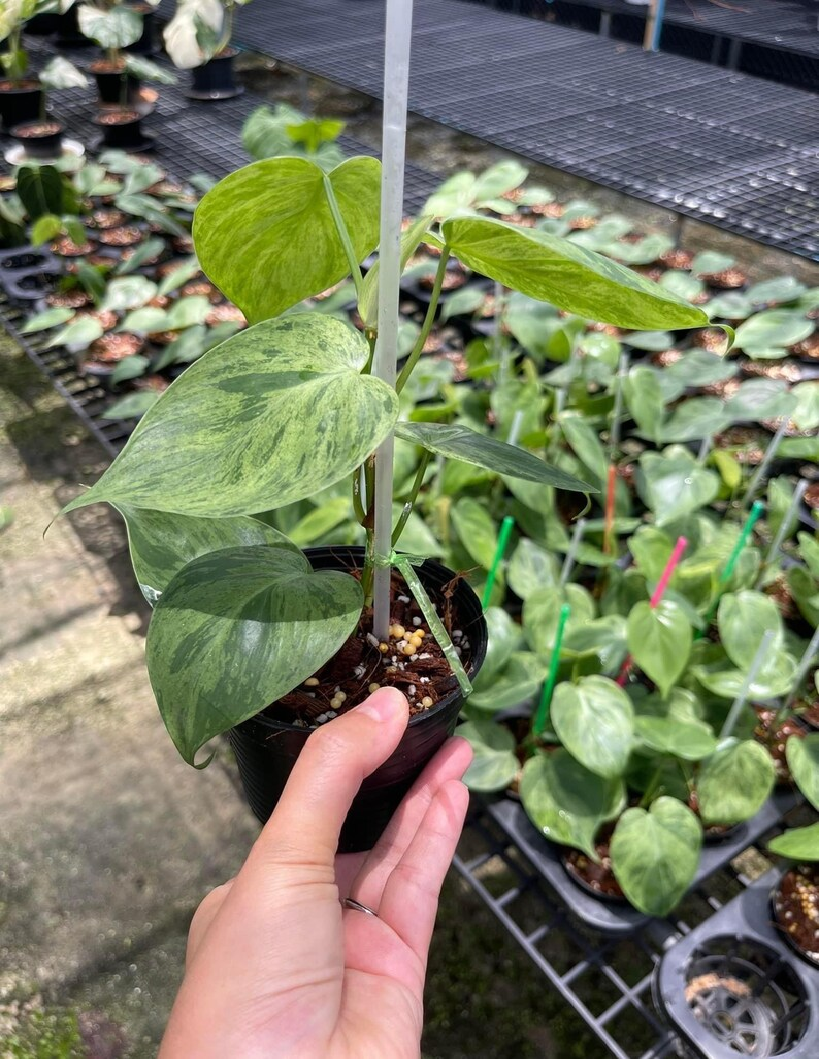
Common problems and solutions
Yellowing leaves
If your Philodendron hederaceum variegated has yellowing leaves, it could be due to overwatering or a lack of nutrients. Allow the soil to dry out slightly between waterings and consider adding a balanced liquid fertilizer during the growing season.
Root rot
Root rot can be a problem for Philodendron hederaceum variegated plants if they’re overwatered or if the soil doesn’t drain well. To prevent this issue, use a well-draining potting mix and avoid overwatering.
Pests
Pests such as spider mites, mealybugs, and scale insects can be a problem for Philodendron hederaceum variegated plants. Check your plant regularly for signs of pests and treat them promptly with insecticidal soap or neem oil. Learn how to tackle these common issues in our comprehensive Philodendron care guide
Benefits of having a Philodendron hederaceum variegated
Air purification
Like other houseplants, the Philodendron hederaceum variegated helps purify the air by absorbing toxins and releasing oxygen. This can improve the air quality in your home, making it a healthier environment for you and your family.
Aesthetic appeal
The vibrant, variegated foliage of the Philodendron hederaceum variegated makes it an eye-catching addition to any indoor space. Its beautiful leaves can brighten up a room and add a touch of nature to your home.
Mental health benefits
Caring for houseplants like the Philodendron hederaceum variegated can have positive effects on your mental well-being. It can help reduce stress, improve mood, and foster a sense of accomplishment and responsibility.
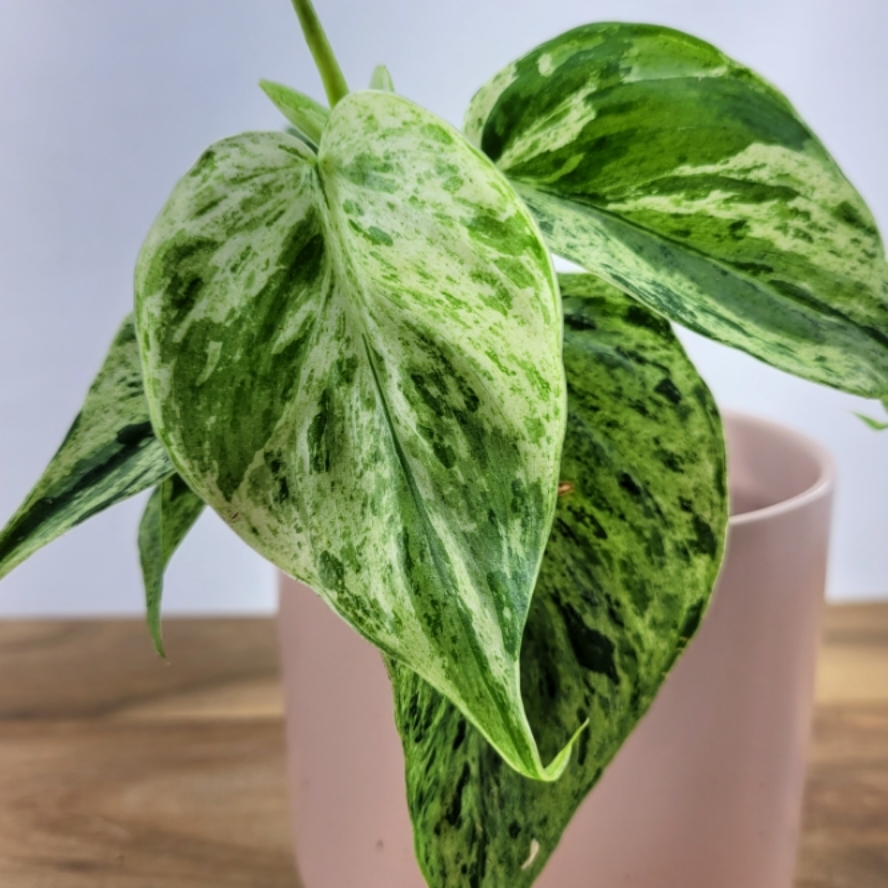
“Discover the rare beauty of Philodendron hederaceum variegated – Click now to bring this exquisite plant into your home!”
How to choose the right Philodendron hederaceum variegated
Size and space considerations
When selecting a Philodendron hederaceum variegated, consider the size of the plant and the space you have available. Choose a plant that will fit comfortably in your space, keeping in mind that it may grow larger over time.
Color and pattern preferences
With so many different variegated patterns available, you’ll want to choose a Philodendron hederaceum variegated that appeals to your personal taste. Look for a plant with a color and pattern that you find visually appealing and that will complement your home decor.
Price and budget
The cost of a Philodendron hederaceum variegated can vary depending on factors such as size, variegation pattern, and rarity. Determine your budget before shopping for a plant and stick to it to avoid overspending.
Conclusion
The Philodendron hederaceum variegated is an attractive and easy-to-grow houseplant that can bring a touch of color and nature to your indoor space. By understanding its care requirements, propagation methods, and common problems, you can help your plant thrive and enjoy its many benefits.
FAQs
- Is the Philodendron hederaceum variegated toxic to pets? Yes, the Philodendron hederaceum variegated contains calcium oxalate crystals, which can be toxic to pets if ingested. Keep your plant out of reach of pets to prevent accidental ingestion.
- How often should I fertilize my Philodendron hederaceum variegated? You should fertilize your Philodendron hederaceum variegated every four to six weeks during the growing season (spring and summer) with a balanced liquid fertilizer. Reduce fertilizing during the fall and winter months, when the plant’s growth slows down.
- Can I grow my Philodendron hederaceum variegated outdoors? While it’s possible to grow your Philodendron hederaceum variegated outdoors in warmer climates, these plants generally do best when grown indoors as houseplants. If you choose to grow it outdoors, be sure to protect it from direct sunlight and temperature extremes.
- How can I encourage more variegation on my Philodendron hederaceum variegated? To encourage more variegation, provide your plant with bright, indirect light, as this will promote the development of new leaves with vibrant variegation. Additionally, proper care and maintenance will help ensure your plant remains healthy and produces attractive foliage.
- Why are the leaves on my Philodendron hederaceum variegated turning green? If the variegation on your plant’s leaves is fading and turning green, it may be due to a lack of adequate light. Ensure your Philodendron hederaceum variegated receives bright, indirect light to maintain its vibrant variegation.

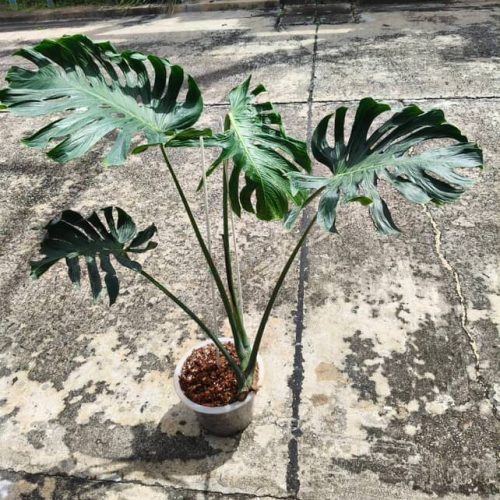
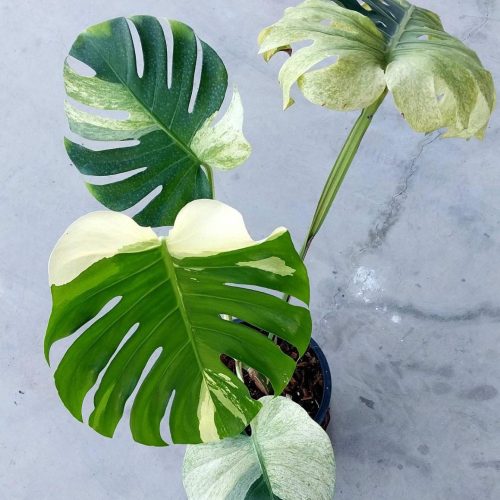



![12x Monstera Borsigiana Albo half leaves variegata [3-4 leaves]](https://greenboog.com/wp-content/uploads/2024/10/Monstera-Borsigiana-Albo-half-leaves-variegata-1-500x500.jpg)
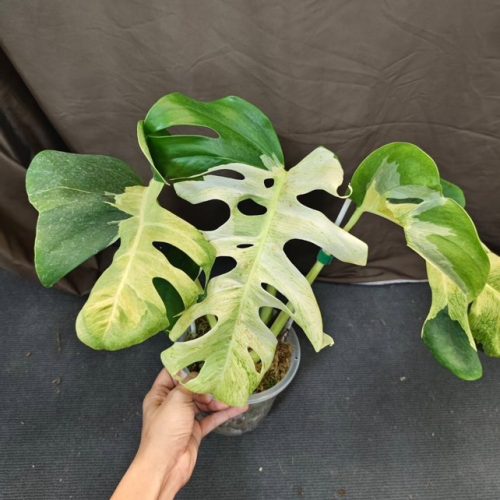

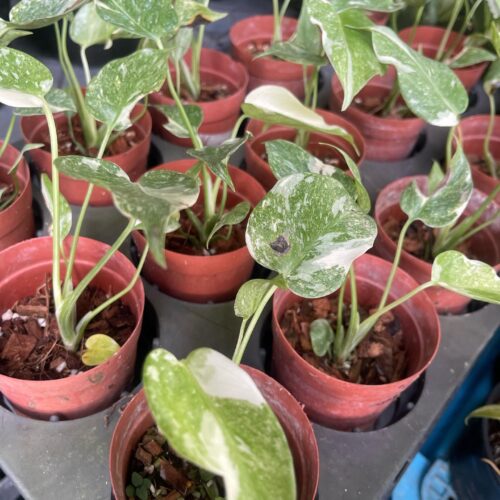
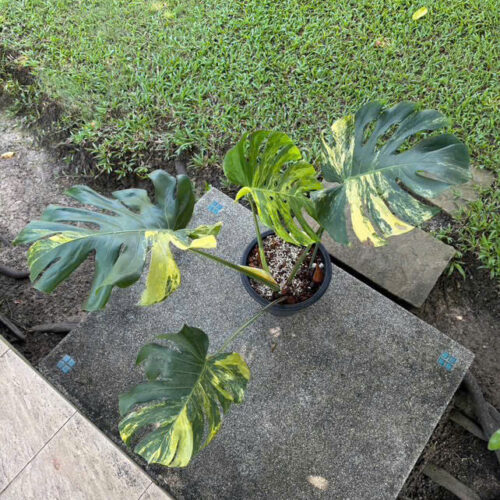
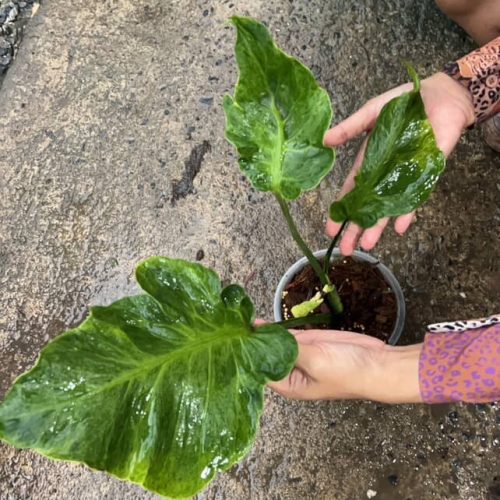
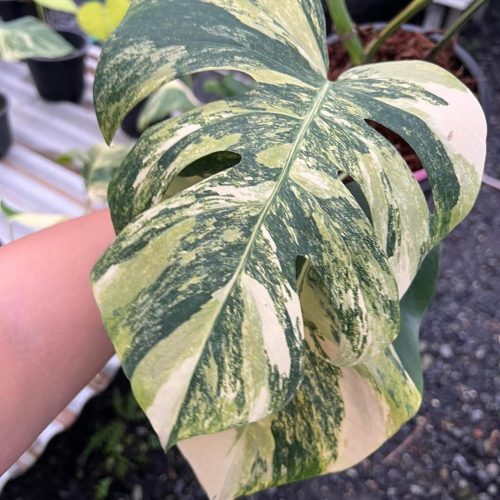

![10 Pots x Monstera Aurea Variegated / Mix Aurea tri color 3-4 leaves [well variegated]](https://greenboog.com/wp-content/uploads/2024/08/Monstera-Aurea-Tri-color-500x500.jpg)

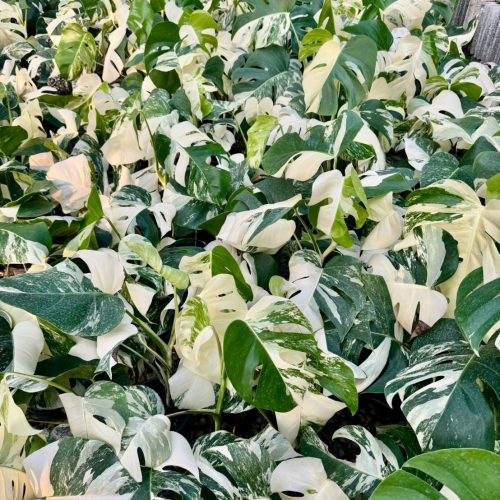
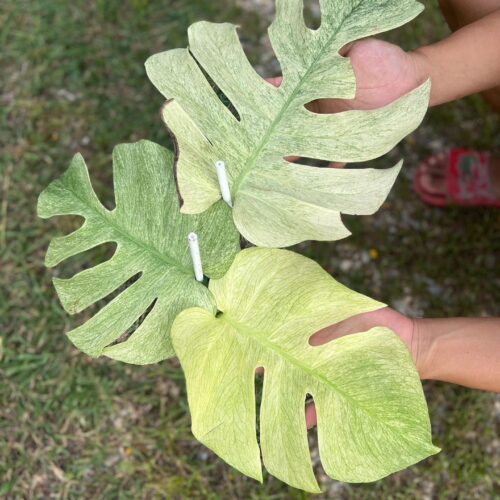
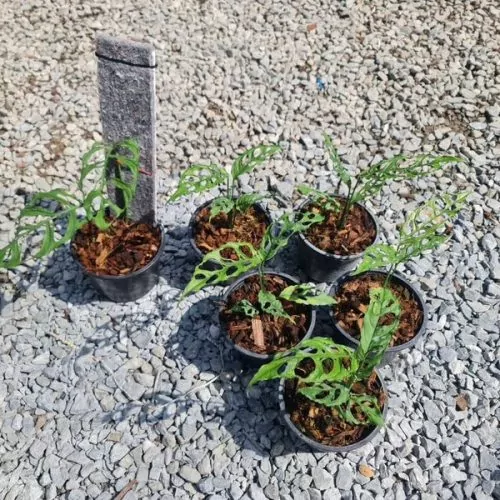
![[SALE] 10 Pots x Monstera Aurea Variegated 3-6 leaves [Medium size]](https://greenboog.com/wp-content/uploads/2025/01/Monstera-Aurea-variegated-4-6-leafs-500x482.jpg)





















